
PHILIPS CD751
MAY25 2008
This is one
of most intriguing products I ever had.
It was recommended
to me by very nice man from Romania - Mr. Florin Baciu. I am infinitely
grateful for it.
He told me that
this player has a magical sound thanks to a VERY RARE DAC chip.
Thanks to the power of internet - one day later I had it at home.
It was late at night and just to check this player - I plugged it in.
My expectations of
un-modified, un-lampized player were very low. BUT ...
This must be the best sounding stock player I ever had. It totally
beats almost all players, and it is about equal with the best stock
machines, if
memory serves me, like for example Copland 289, JVC1050K2, Naim CDS-1
and maybe Cambridge CD-4. It would even beat the stock Meridian 506.20
That is already a
HUGE gap in price and expectations. 2 leagues apart in perceived value.
But the SOUND ! Suono ! Klang ! le Son ! Dźwiek !
Zwuk !
Wonderful. Even in STOCK FORM IT WAS ALMOST EQUAL to totally tweaked to
the maximum Marantz CD with lampized TDA1541A.
I have no way of
proving this very strong statement, but it was a damn shocking
experience.
Next evening I lampized it after some heavy additional tuning and right
now I am sitting and listening to my new reference king of CD.
Ah and I forgot - I paid 20 Euro for it with remote and box.

Manufacturing date
of the DAC chip: August 1994
CD player is from Singapore and part from Malaysia (mechanism).



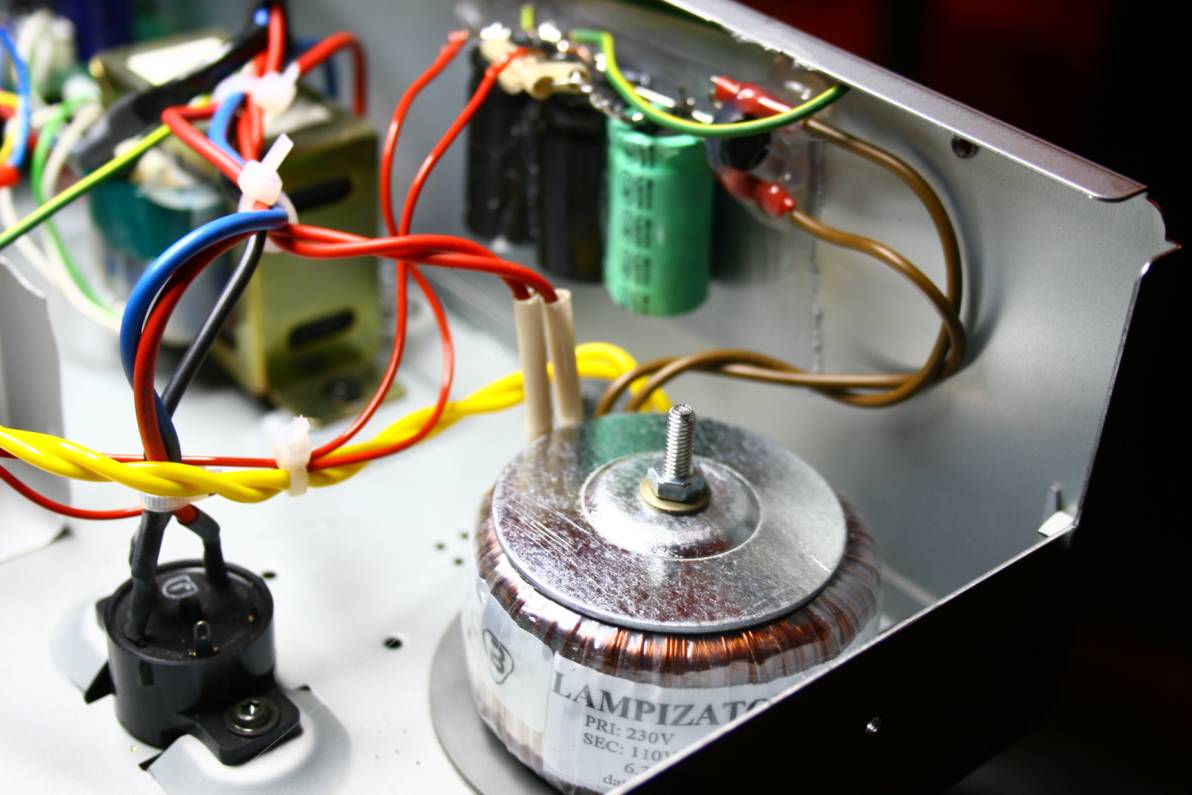
Transformer and
power supply of anodes. The heaters in cathode followers can be AC
which I used. 6,3 Vac from transformer.

The tube with two huge Obbligato caps.

This is the new
7805 regulator supplying clean 5 VDC to the DAC chip. I added the
regulator because the player's regulator 7805 supplied apart from the
DAC also all the player - tens of other elements. So now tha DAC has
exclusivity for this clean and strong 5VDC.
This dac chip is the
rarest Philips DAC on Earth. Only used during one year - 1994 - and
only by 4 companies: Philips, (5 players) Micromega, Alchemist
and Sugden.
Google has almost no information about it.
EVEN GOOGLE which knows
every f***g thing.
ALCHEMIST NEXUS APD32A 2 x
TDA1549
CDM 12.1
MARANTZ CD-48 TDA1549 CDM 12.1
MARANTZ CD5000 TDA1549 - SAA7378 CDM 12.1 (VAM 1201)
MICROMEGA MINIUM TDA1549 CDM 12.2
PHILIPS CD750 TDA1541A / TDA1549 CDM 12.1
PHILIPS CD751 TDA1549 – SAA7378 CDM 12.1/05
PHILIPS CD753 TDA1549 – SAA7378 CDM 12.1 / VAM 1201
SUGDEN
MASTER
TDA1549
CDM 12.1
From the Philips
datasheet.
FEATURES
· Finite-duration impulse-response (FIR) filtering and noise
shaping incorporated
· 2nd-order noise shaper
· Wide dynamic range (true 18-bit resolution)
· Low total harmonic distortion
· No zero-crossing distortion
· Superior signal-to-noise ratio
· Bitstream continuous calibration conversion concept
· Inherently monotonic
· Voltage output (1.5 V RMS) at line drive level
· Single supply rail (3.8 to 5.5 V)
· Optimum output voltage level over the entire supply range
· Small outline packaging (SO16)
· Wide operating temperature range (-30 to +85 °C)
· Standard Japanese input format
· No analog post-filtering required
· Low power consumption
· Integrated operational amplifiers.
GENERAL DESCRIPTION from Philips datasheet:
Fig.1 Block diagram.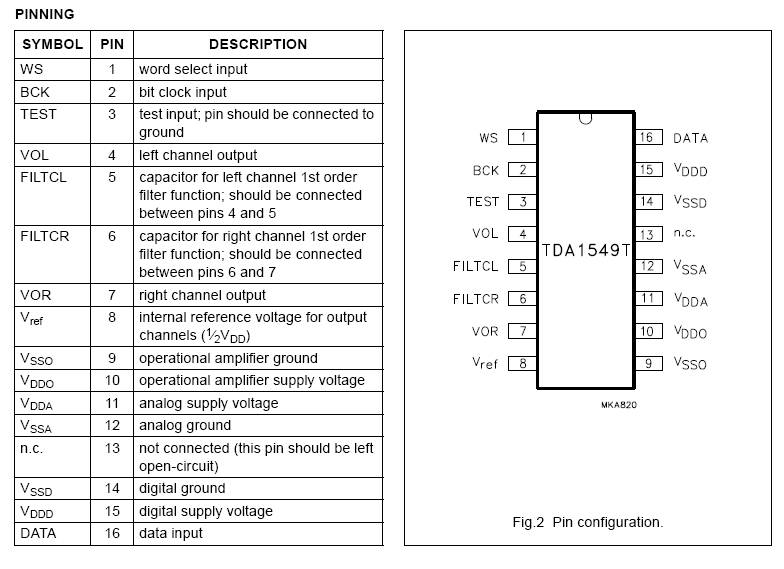
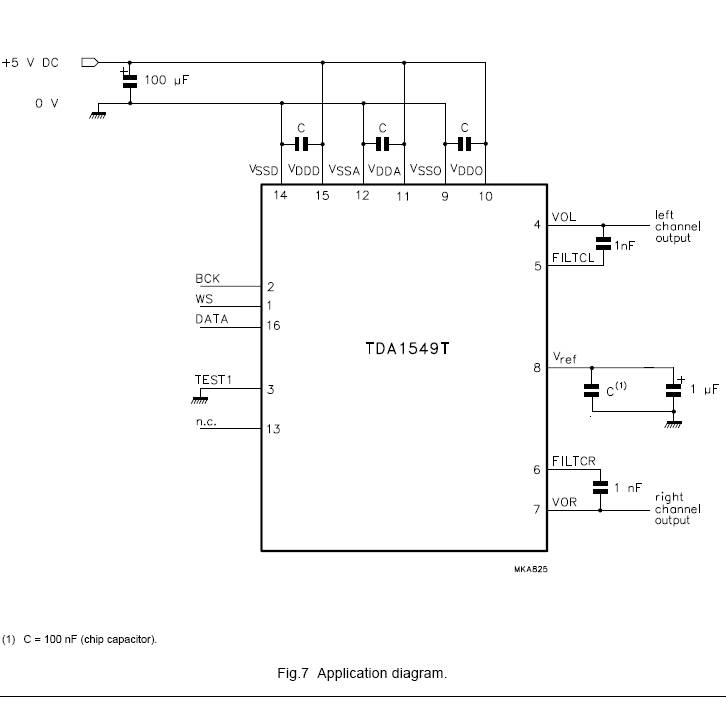
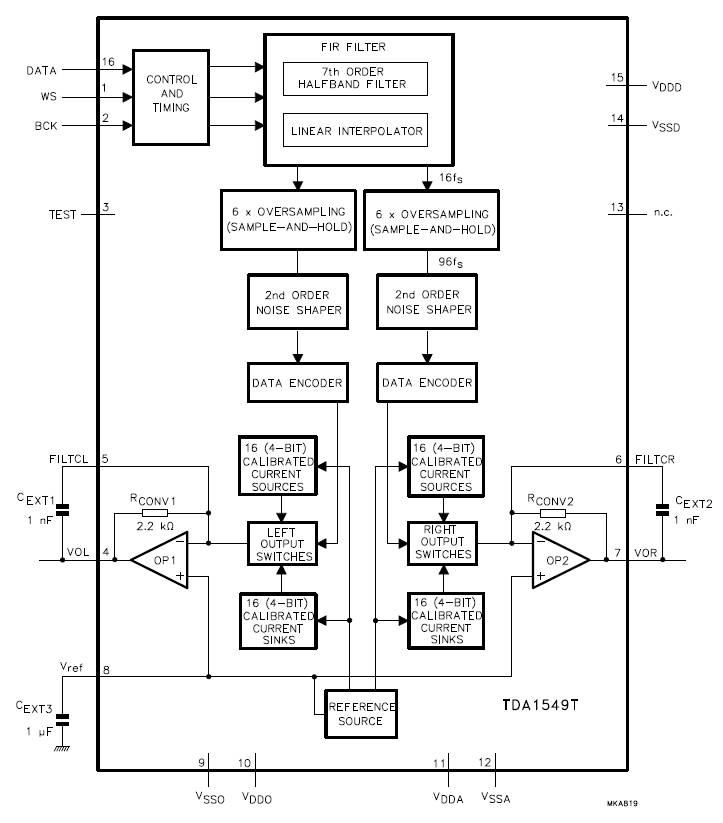
(after some time I discovered that the DAC chip has IDENTICAL datasheet
and block diagram and pinout as their own TDA1305. Whatever that means
- go figure.
My proposal was initially (I was wrong,
anyway):
1. To
increase the main capacitor for power from 4700 to 10 000 uF. (good
idea)
2. To add os-con or black gate to legs 11 and 15 power input (good idea)
3. To kill the internal op-amp by removing its power supply from leg
10. (not so good idea)
4. To remove the op-amp filter feedback loop - external capacitors 1 nF
- legs 4-5 and 6-7 respectively. (not so good idea)
5. This way we gain a pure output not only from DAC straight - more -
FROM INSIDE GUTS OF THE DAC. This is really upstream !!!!
This output I hoped
was going to be current, but no - it is still Vout. With plus 1 V DC
component (necessity of capacitor.)
I went further and
cut off the supply line from the 7805 regulator to DAC. This one
regulator feeds the whole goddamned player - 20 power consumers or so.
I took a wire from the hot leg of main 10 000 uF capacitor and wired
it's 12 V to the DAC and just near the DAC I put another 7805 (no
heatsink needed) and I got a dedicated +5V supply just for the DAC
(legs 11 and 15 and respective oscons).
I did not touch the
clock because it is 33 meg - I dont have such clock on hand.
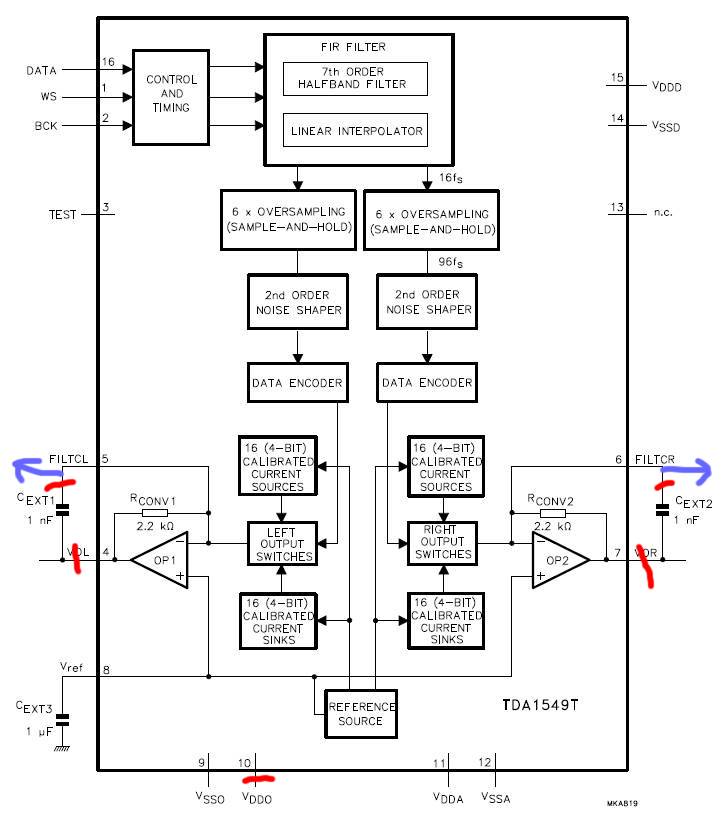
Of course red is for CUT and blue is for ADD output.
Then I lampized it
using SRPP lampizator with 250 Ohms resistors in both cathodes and 250
K in the input grids. Tube 6H6P plays here best for me.
Input caps are
MKP 1 uF and outputs - Obbligato oil caps 2 uF.
The good thing is
that it becomes MOST RECOMMENDED player for people who dont want to do
anything DIY.
If you want high
end without Audionote price - GET ONE OF THESE PLAYERS.
They have good display
good remote
easy to find laser
one half opamp per channel only
airy open and pure highs
mids to die for
superb bass
and LOTS of space inside shall you ever want a lampizator inside.
In fact, I can imagine that with
just 2
oscons and a snipit bypass from DAC legs 4 and 7 via capacitors to
RCA - that would be a giant killer without any tubes.

Is there lotsa
sapace for lampizator or what ?! It is just begging for lampization.

The mistery magic
chip - TDA1549 which looks like nothing at all.
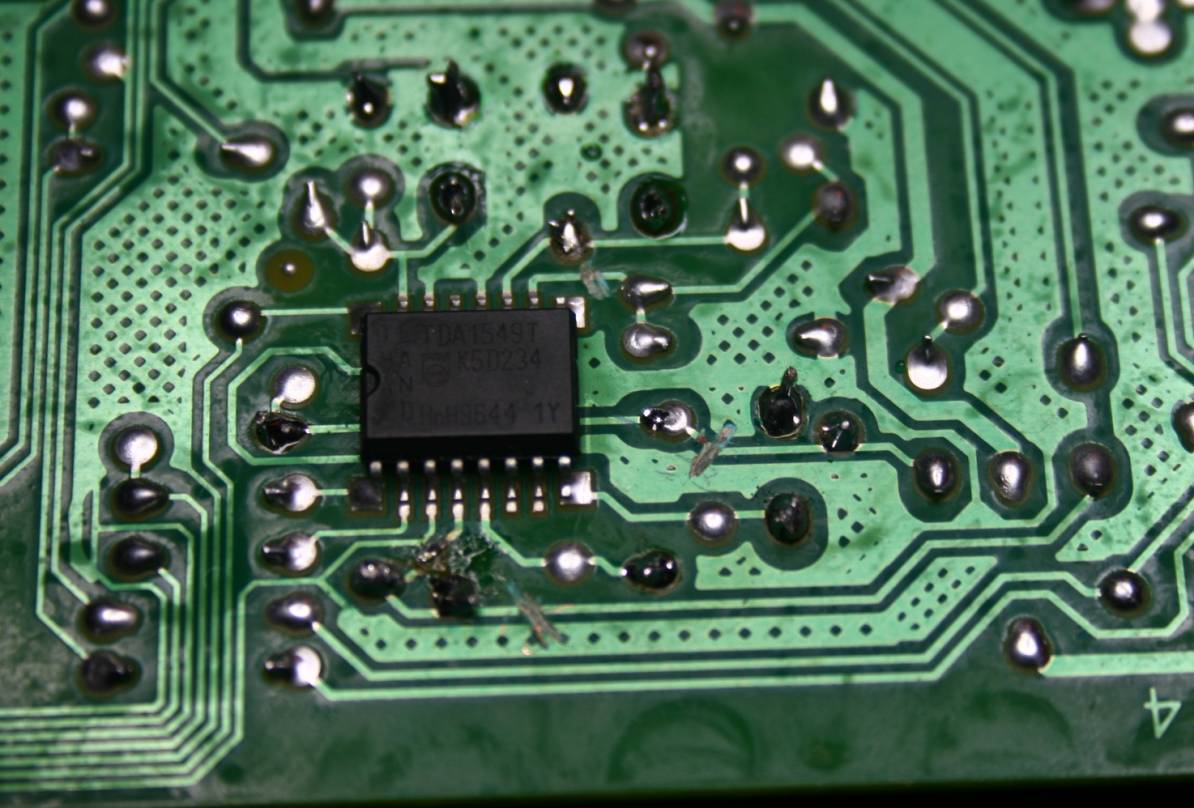
The TDA with traces
cut (don't quote me on that - it was early experiments)

The red circles show caps to be removed.
Yellow ones -show the upgraded
ones (oscon and tantalum)

this upgrade of the
demodulator chip capacitors was a failure because of tight space - they
had to be removed.

The better attempt
- I added new caps across the blue ones as on the photo one above this
one.

The general look on
the main PCB. You must agree - nothing to impress audiophiles. Nothing
to display at the HighEnd show in Germany .

Three audiophiles
who listened to this player lampized with 6H6P (dont dream of any other
tube for this one because it is Voltage U out type !!!)
agreed that it bettered the TOTALLY
tweaked and perfect Marantz CD50 with TDA1541A. I agree. It BEATS THE
1541 believe it or not. At least to my ears.
And today I just
bought the 753 hahahahahahahaha !